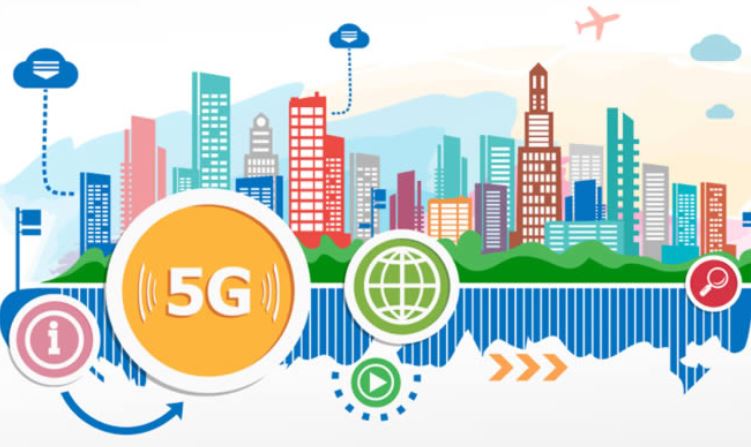The 5G network is already a reality, with service already available in some cities. However, it seems that there are still more questions than answers about this technology. Some want to know where they will have access to it or if it will ever arrive in their city, while others are more focused on finding a compatible phone. And of course, you have to choose the best operator. This is everything you need to know about what the 5G network is.

Before explaining how the 5G Cellular Towers network works, it is probably a good idea to explain what 5G is. There are a lot of specific details that we’ll talk about later in this post, but here’s a quick introduction.
5GCellular TowersAlready Works in Some Countries in Asia, Europe, and the United States. See their benefits:
- Ten times faster than 4.5G
- Reduces latency (sum of delays in the network)
- A better experience in online games and video conferencing
- A higher density of connected devices (100 per m² *)
Why is 5G Technology Important?
The short answer is that 4G technology is increasingly saturated. Inevitably, the increase in demand will cause problems for everyone: consumers, businesses, government agencies, and others. Latency will increase, downloads will be delayed, and overall performance will decrease.
The downsides for users are obvious. However, services that depend on mobile data to function (finance, emergency services, data security, etc.) will experience increasing delays and failures when sending and receiving data.
5G technology aims to solve these problems by taking advantage of several different technologies that work together. In short, 5G technology promises to change all aspects of mobile computing as we know it today.
What is 5G Technology Used for?
This technology offers many obvious advantages in terms of speed, latency, and bandwidth. Users will be able to download content faster, experience fewer buffering delays when streaming media content, and play graphics-intensive games.
In addition, they will be able to enjoy better virtual and augmented reality experiences. For example, a two-hour movie can be downloaded in less than four seconds. However, 5G technology will be applied to cases that go far beyond consumer products and in ways, we cannot even imagine.
It is the technology that will enable the instantaneous transmission of huge amounts of data, creating a near-perfect connection between the digital and physical world, as well as between cloud services.
Transport
Using real-time connectivity, 5G technology will help traffic lights handle intersections more effectively by detecting oncoming cars. There will be no more waiting at “endless” red lights if there is no traffic around. The cars will not only be able to drive themselves but will be able to detect and communicate with other cars to minimize traffic jams and react before the driver to avoid risks.
Drug
People in rural areas will have unprecedented access to healthcare thanks to 5G technology. Doctors will be able to use augmented reality to treat patients elsewhere. Artificial intelligence (AI) and instant access to vast amounts of medical data will help medical staff diagnose diseases and design treatments more quickly and accurately.
Agriculture
By 2050, farmers will need to be able to feed 9.8 billion people with the same amount of land that they feed 7.8 billion today. 5G technology will be able to increase efficiency by guiding autonomous agricultural equipment such as tractors and combine harvesters.
In addition, it will allow the use of drones to detect changes in plant condition, soil quality, and moisture, and apply the exact amount of pesticide, water, or fertilizer needed.
Public Services
5G technology can help emergency services, like the 911 system in the United States, by optimizing the coordination of services, such as police, ambulances, and firefighters. Location information will be much more accurate, so that first responder can identify destinations, even in rural areas. Disaster response will be more effective as critical areas will be identified more quickly and assistance will be more comprehensive.
How does 5G Technology Work?
The technology behind 5G is complex. The problem is that low frequencies cannot transmit data fast enough to accommodate the speeds that 5G technology must achieve. In addition, the number of devices using these frequencies is increasing, which will further reduce speeds. For this reason, other technologies must be used.
Millimeter Waves
They are waves at very high frequencies (from 20 GHz to 100 GHz), which can transmit signals at incredible speeds. Unfortunately, they cannot travel long distances, take turns, or pass obstacles. The solution would be to install several millimeter-wave nodes within the line of sight to maximize coverage.
Beam Molding
Cellular towers transmit their signals in all directions, which can generate a lot of interference. Beamforming works like a traffic light, moderating signals and focusing on a single data stream for a specific user at a given time.
After the data is transferred, the signal moves to accommodate another user’s request. This personalized signal can greatly reduce interference and make data transmission faster and more efficient.
Network Targeting
For some, network segmentation is the hallmark of 5G technology, allowing providers to dedicate virtual “segments” of their networks for specific uses. For example, data that is used for entertainment, communication, and the Internet will obtain a segment of the network, while the transmission of data machine to machine (Internet of Things or IoT) will have its own segment.
Most importantly, essential data, such as that required for driverless vehicles, emergency services, and other important infrastructure, will have a single segment that cannot be used by other services.
Interesting Related Article: “Evaluating and choosing optimal antenna designs for 5G devices“

